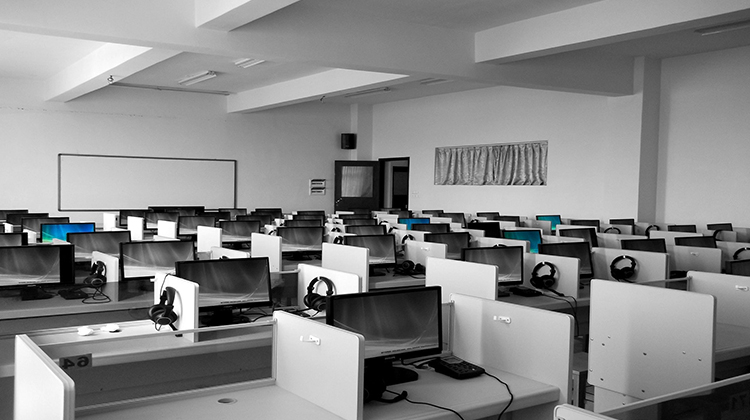Fixing Slow and Unreliable Internet in Australian Schools

The possibilities that are opening up when technology is brought into the classroom are endless. When technology is integrated into lessons in ways that are aligned with good in-person teaching pedagogy, learning can be better than without technology. This type of blended learning can produce greater learning outcomes than exclusively in-person learning.
However, the education sector’s increased reliance on technology to enable educators to teach and students to learn is putting pressure on their aging IT infrastructures and also putting stress on their limited IT budgets.
The Australian education sector is becoming increasingly dependent on functioning and high-performance IT infrastructures. These complex IT infrastructures need to be constantly monitored to ensure they provide an excellent teaching and learning experience for everyone.
Unfortunately, the education sector is plagued with issues that get in the way of providing a great learning experience and at the top of that list is the problem of slow internet due to a lack of network bandwidth, which can really cause headaches for teachers and students.
However, due to the limited budgets mentioned, most public schools don’t have the resources to provide devices for every student for proper classroom usage, which may cause teachers to feel discouraged and abandon fully implementing technology into their teaching.
In light of the scarcity of technical staff and resources in education, Australian schools should seriously consider implementing infrastructure monitoring, as it can provide them with a centralised method of identifying any technical issues before they impede the learning experience.
Unreliable Wi-Fi Can Increase Teacher Workload
A strong Wi-Fi signal that assures students of anywhere anytime connectivity for a range of devices is essential in today’s learning environment. Unreliable Wi-Fi in schools can leave teachers having to plan two versions of lessons, one for if the technology is working and one for if the technology is not working – and that’s obviously really problematic.
Poor infrastructure can affect Wi-Fi connection and limit internet access to technology devices. Especially, in rural schools and older buildings without proper power voltage to support multiple tech devices.
A quarter of schools in Victoria have internet speeds below the 300Kbps per student state bandwidth target and 42 per cent have fewer than one device per student, according to a report by Victoria’s auditor general.
In this report, ICT Provisioning in Schools, the auditor general found that broadband infrastructure, particularly in lower socio-economic areas, was keeping some schools below bandwidth targets.
Unnecessary Software
Software purchasing is an area of significant waste in the education system. The auditor general’s report found that there were 1762 school transactions from 2016 to 2020 for software that is available to schools for free through the DET’s licensing agreements.
School ICT policies should cover purchasing trends, including purchases outside existing arrangements; whether schools are implementing their ICT policies as intended; and assessing whether ICT assets meet the minimum government standards.
Monitoring can help manage the licensing agreements to ensure that all software is compliant and that unnecessary or unutilised software licenses are not being paid for.
Service Level Agreement Reporting
Schools have a large number of Service Level Agreements (SLA) in place with a multitude of different providers, large and small. Many of these offer 99.9 per cent availability in their SLAs. However, with limited technical staff available to monitor these, any issues experienced rarely have any ramifications for vendors.
Centralised monitoring can enable a school to check how their applications are performing in terms of their SLAs and where they are under par, there may be compensation due.
Equitable Access to Technology in Different School Contexts
The rapid shift to remote learning in 2020 highlighted issues of equity and access for students in different school contexts. And the divide between access to the internet at home was put into the spotlight when students were suddenly expected to learn from home.
Some schools had to deliver laptops and tablets to students who did not have them at home, with some state governments subsidising home internet and laptop or tablet costs for students who did not have access. Others had to share devices with siblings and family members and others were emailed worksheets for parents to print out at home.
Now that many Australian students have been given access to devices and home internet, they have the ability to connect to school apps, software and systems as well as participate in lessons remotely and can now hand in their homework online.
The Take Out
Successful student use of technology in education hinges on knowing how to manage technology efficiently and overcoming barriers that come with integrating different technologies.
Since digital learning only works if there is a fully functioning school network, infrastructure monitoring will help schools to specify their future requirements for technology resources that will enable contemporary digital learning. Assessing the provision of suitable infrastructure, resources and services in light of schools’ future needs; will enable them to maintain and support their own highly functioning IT services.
It is encouraging to see that the Australian state and territory governments have invested significantly to close the digital gap in schools by retooling regional schools, upgrading learning space technology and giving students cutting-edge distance education platforms and digital education resources.